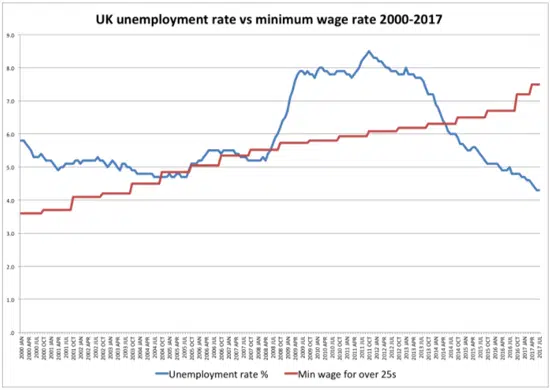It is expected that at least 150,000 employees in the UK are set to receive a pay rise, due to an increase in the ‘Real Living Wage’.
The real living wage, unlike the national minimum wage, is an hourly rate of pay set independently and updated annually that is calculated with reference to the basic cost of living in the UK. It is consistently slightly higher in London.
The Living Wage Foundation announced the increase will rise 3.6% to £8.75 per hour around the UK and 4.6% to £10.20 in London, giving a wages boost to workers at over 3,600 companies which have adopted the measure.

The latest report showed that more than a fifth of people working in the UK are still earning a salary that is below the living wage.
It also reported that female workers are particularly badly affected, with a quarter earning less than the real living wage, compared to 16% of all males.
“The new living wage rates announced today will bring relief for thousands of UK workers being squeezed by stagnant wages and rising inflation,” said Katherine Chapman, director of the Living Wage Foundation.
This approval is welcomed after it was announced that will be a 0.25% increase in interest rates last week.
There has been a debate as to whether the increasing pay rates would cause a hike in unemployment levels. However, the most recent data suggests the traditional economic idea, that rising wage prices reduce the number of available low-paid jobs, might not be true.
In fact, British wage and unemployment data appear to show that a doubling of the minimum wage over the last 17 years has had no obvious effect on unemployment. The UK currently has the lowest ever unemployment and the highest ever minimum wage.
This could be due businesses in the UK finding more innovative strategies to help manage their workforce more efficiently.
Cloud-based Workforce Management solutions are now widely regarded as essential tools for companies with staff on hourly paid salaries.
ShopWorks offers a single platform for staff scheduling, budgeting and demand management, ensuring maximum profitability. Bespoke Workforce Management solutions are expected to help save up to 10% on direct payroll costs alone, allowing for budgets to be spent more effectively.

